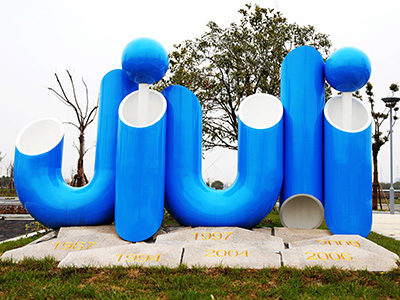As a new type of industrial raw materials, stainless steel has many characteristics such as corrosion resistance, oxidation resistance and so on. It is widely used in various industries in China. And with the continuous advancement of industrialization and the upgrading of civil consumption, the industry market competition is becoming more and more fierce. So, how about the development prospects of the stainless steel industry? Next, follow the Xiaobian to understand it.

From the stainless steel industry analysis, in the rapid development of the stainless steel market in recent years, China's vast rural consumption of stainless steel has always maintained a very low level, China's rural market potential is huge. With the improvement of the quality of stainless steel in China, China's cities and other relatively rich classes and regions on the consumption of stainless steel related products need to update and upgrade, driving the demand for high-end stainless steel products. With the accelerated development of domestic industry, higher quality and more complete varieties of stainless steel and corrosion resistant alloys are needed. In recent years, the increase of nickel consumption and the production of dual-phase stainless steel reflects the rising demand for advanced alloy materials in the process of industrialization in China from another aspect.During the "13th
Five-Year" period, China's economy has maintained a steady growth, energy and power demand continues to increase, China's thermal power generator set upgrading will enhance the consumption of stainless steel. Under the background of the rapid increase of national environmental protection pressure, the market demand of environmental protection equipment in China is strong and has great development potential. With the continuous improvement of people's living standards, the output of medicine and food machinery will continue to grow. In general, the stainless steel consumption of the machinery industry in the future still has a large space for growth.
Data show that by the end of 2017, China's stainless steel crude steel smelting capacity was nearly 40 million tons, the output was 25.773,700 tons, and the capacity utilization rate was 64.43%. In 2017, the apparent consumption of stainless steel reached 1.8468 million tons. From the perspective of the consumption structure of stainless steel in 2016, the downstream of stainless steel was mainly manufacturing, accounting for 75.43%, and the construction field accounted for 24.57%.
From the point of view of balance of supply and demand, the situation of oversupply is obvious. According to industry statistics, in the first quarter of 2018, 34 domestic stainless steel manufacturers produced a total of 6.61 million tons of crude steel, up 10.08% from last year. In January, the output increased the most, up nearly 29.32% compared with the same period last year. The production increase enterprises were mainly Qingshan, Delong, Huale and Guangxi Jinhai, which increased by about 560,000 tons.
At present, the export scale of China's stainless steel tableware has expanded rapidly, and has been exported to more than 100 countries and regions around the world, and its market share is also increasing. A large number of exports of stainless steel tableware products, but also led to the development of such as upstream stainless steel manufacturing, equipment manufacturing and other related industries. Today, the production process of domestic enterprises has become increasingly mature, product quality has been gradually improved, has formed a stable high quality stainless steel product production system.
In the future, with the slowing down of China's macroeconomic growth and downstream steel consumption speed, China's stainless steel apparent consumption growth rate is faster than steel, in the future industrial and civilian areas of the general trend of continuous popularity, stainless steel consumption is still expected to maintain a stable growth.


















